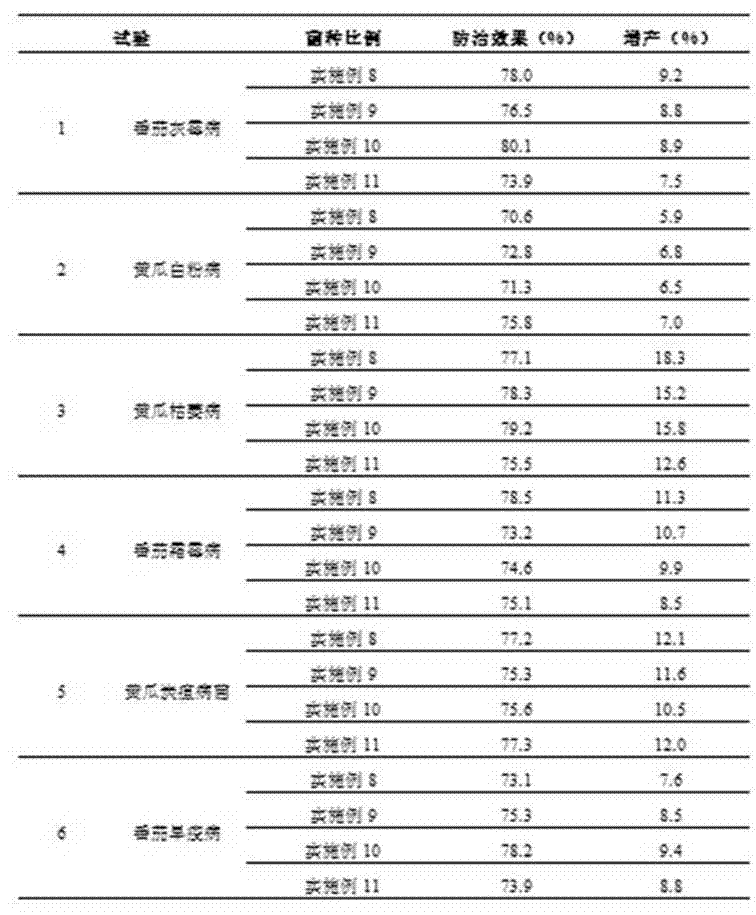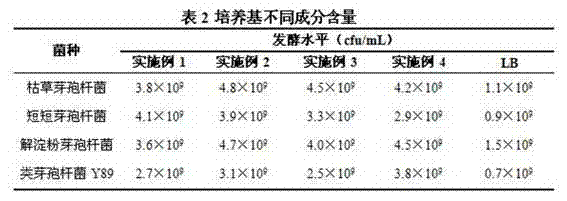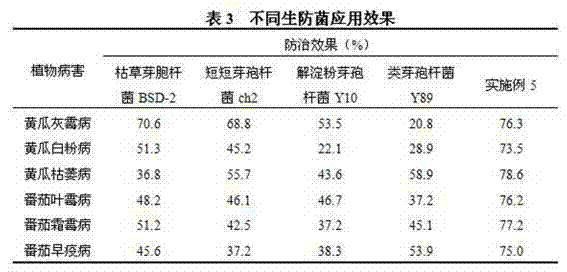Compound microbial bacteria and application thereof in prevention and treatment of vegetable fungal diseases
A microbial compound bacteria and compound bacteria technology, applied in the field of broad-spectrum microbial compound bacteria, can solve the problems of difficulty in the prevention or initial control of fungal diseases, difficulty in determining the disease, and narrow bacteriostatic spectrum, so as to promote sustainable development and ensure food safety. , the effect of improving product quality
- Summary
- Abstract
- Description
- Claims
- Application Information
AI Technical Summary
Problems solved by technology
Method used
Image
Examples
preparation example Construction
[0035] The preparation method of the composite bacteria in each embodiment of the present invention is as follows: separately culture Bacillus subtilis, Bacillus amyloliquefaciens, Bacillus brevis and Paenibacillus, and then mix them according to the ratio.
[0036] The cultivation methods of Bacillus subtilis, Bacillus amyloliquefaciens, Bacillus brevis and Paenibacillus in the present invention are well known to those skilled in the art.
Embodiment 1~4
[0038] Embodiment 1~4: The influence of different culture medium components on bacterial strain fermentation level
[0039] Among the present invention, Bacillus subtilis, Bacillus amyloliquefaciens, Bacillus brevis and Paenibacillus Y89 adopt the substratum components listed in Examples 1 to 4 to cultivate, and the substratum composition of Examples 1 to 4 is shown in Table 1, Each component was dissolved in water, and finally the volume was adjusted to 1L, and the pH was adjusted to 7.0±0.2. Each strain was cultured at 30°C with 200 rpm shaker. At the end of the culture period, the fermentation level of each bacterium reached 2-5×10 9 cfu / mL. If conventional LB or PB medium is used, the fermentation level of each bacteria is 0.1~1.8×10 9 cfu / mL. See Table 2 for the results of the cultivation.
[0040]
[0041]
Embodiment 5
[0042] Embodiment 5: compound bacterium and single bacterium application effect
[0043] The broad-spectrum microbial composite bacteria for preventing and treating fungal diseases of vegetables in this embodiment consists of the following four strains: Bacillus subtilis BSD-2, Bacillus brevis ch2, Bacillus amyloliquefaciens Y10 and Paenibacillus Y89. The bacterial counts of the above-mentioned various microorganisms in the composite bacteria (the cell numbers of different strains accounted for the percentage of the total cell number of the composite bacteria) were respectively: Bacillus subtilis BSD-2 accounted for 35%, Bacillus brevis ch2 accounted for 23% , Bacillus amyloliquefaciens Y10 accounted for 15%, Paenibacillus Y89 accounted for 27%, the total number of bacteria contained in the bacterial liquid was ≥2.0×10 9 cfu / mL.
PUM
 Login to View More
Login to View More Abstract
Description
Claims
Application Information
 Login to View More
Login to View More - R&D
- Intellectual Property
- Life Sciences
- Materials
- Tech Scout
- Unparalleled Data Quality
- Higher Quality Content
- 60% Fewer Hallucinations
Browse by: Latest US Patents, China's latest patents, Technical Efficacy Thesaurus, Application Domain, Technology Topic, Popular Technical Reports.
© 2025 PatSnap. All rights reserved.Legal|Privacy policy|Modern Slavery Act Transparency Statement|Sitemap|About US| Contact US: help@patsnap.com



